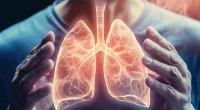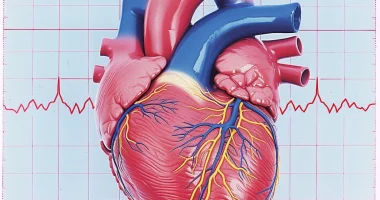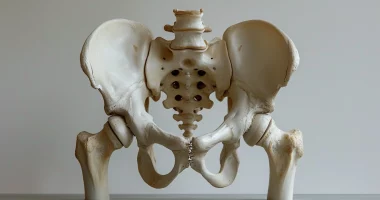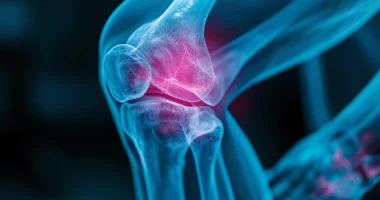Pharyngeal cancer
What’s that?
Pharyngeal cancer is a malignant neoplasm originating from epithelial cells.
About the disease
Pharyngeal tumors are characterized by genetic abnormalities seen in virtually all human neoplasms. The cells of these neoplasms are dominated by mutations and deactivation of genes that regulate the cell life cycle and programmed cell death. The main risk factors for the development of pharyngeal cancer are tobacco smoking and alcohol consumption, environmental exposure, and ultraviolet radiation, as well as various infections, particularly those caused by the human papillomavirus. By histological structure, cancer of pharyngeal localization, as a rule, is squamous cell cancer.
At the very beginning of the pathological process, as a rule, a person is bothered by discomfort and pain when swallowing. Sometimes, the first sign of the disease is the appearance of metastases in the neck in the form of dense, rounded masses that may rise above the skin level.
The treatment program is tailored to the location of the primary tumor, its size and depth of spread, and the involvement of cervical lymph nodes. The histological structure and the sensitivity of the tumor to radiation and chemotherapy are also important.
Types
According to the form of growth of the malignant tumor is distinguished:
- exophytic;
- infiltrative;
- ulcerative cancer.
In practical oncology, classifying the malignant process by stage plays a role.
- Stage 1 corresponds to a tumor that has not spread beyond the basal membrane.
- In stage 2, the tumor has crossed this barrier but is confined to the borders of the pharynx.
- In stage 3, tumor outgrowths are found in regional cervical lymph nodes.
- Stage 4 reveals distant metastases.
Metastasis usually occurs along the jugular vessels, to the lymph nodes in the pharyngeal space, and under the mandible. The occurrence of neck metastases may precede the primary tumor’s clinical manifestations. The international TNM criteria are used to determine the stage.
Symptoms of pharyngeal cancer
One of the common variants of pharyngeal cancer is the involvement of the palatine tonsils and the back wall. The first suspicious signs are discomfort when swallowing and pain. These symptoms of pharyngeal cancer may initially be regarded as manifestations of a “sore throat,” for which anti-inflammatory treatment is given without success.
A tumor can be detected when the patient is examined. What does it look like? Usually, a dense infiltrated lump is found on which there is a zone of ulceration. The pathological focus is localized on the palatine tonsil but can spread beyond it.
Pain may irradiate the ear and the corresponding part of the head. Necrotic processes in the tumor aggravate inflammation, putrid breath appears, and spasms of the masticatory muscles develop.
Reasons
Malignant neoplasms of the pharynx develop from a single precancerous cell that gives rise to a population of cells with a metastatic phenotype and multiple genetic alterations. Most neoplasms are caused by a complex interaction of genetic and external factors that either directly stimulate cell proliferation, increase the probability of mutations in the corresponding genes, or increase the expression of already mutated genes.
External factors that contribute to the development of cancer include:
- gender (men are more likely to be affected);
- harmful environmental factors (asbestos, benzene, radioactive exposure, etc.);
- smoking;
- alcohol;
- viruses;
- food additives;
- hormone replacement therapy;
- stress;
- lifestyle, etc.
Harmful environmental factors act as mutagens, causing somatic mutations responsible for carcinogenesis. The hormonalstatus of the body and estrogen replacement therapy are associated with some cases of cancer, as this hormone and its metabolites stimulate cell proliferation. The expression of proto-oncogenes and suppressor genes increased after estrogen administration.
Men get the disease 3-7 times more often than women. The development of oropharyngeal cancer is often preceded by various pathologic conditions of the mucosa (papillomatosis, atrophic changes caused by smoking and drinking strong alcoholic beverages, spicy and hot food intake). Two independent risk factors for the development of nasopharyngeal cancer are the Epstein-Barr virus and the consumption of salted fish.
Diagnosis
The preliminary diagnosis of pharyngeal cancer is based on the results of objective examination and instrumental diagnostics. In the first stage, anamnestic data, subjective symptoms of the patient, and the results of ENT imaging play a role. If suspicious areas are identified, a scraping of cells for cytologic (cellular) analysis and sampling of material for histologic (tissue) study is performed. Mandatory palpatory evaluation of the cervical lymph nodes and the accessible part of the pharynx. After this, an endoscopic examination is performed, which allows you to study the state of the mucosa under magnification. This method allows you to assess the prevalence of the malignant process. However, the final diagnosis is established based on the result of histological examination, and the prognosis depends mainly on the differentiation of cells. The more mature they are, the better the prognostic characteristics.
Ultrasonography of the neck lymph nodes is a mandatory diagnostic test for patients diagnosed with pharyngeal cancer. With the help of the ultrasound method, it is possible to identify nonpalpable superficial and deep cervical lymph nodes of the head and neck to determine their structure, size, shape, degree of blood supply, relationship with nearby tissues and organs of the neck, to determine the nature of the process. If suspicious lymph nodes are detected, their puncture is indicated and performed under ultrasound control. Detection of tumor cells in the lymph nodes suggests correction of the treatment plan and has an essential impact on the prognosis of the disease.
CT and MRI scans evaluate the relationship between the tumor and surrounding structures. These methods can also detect immediate and distant metastases.
Pharyngeal cancer treatment
Pharyngeal cancer can be treated with surgery, chemotherapeutic drugs, or radiation. Surgical intervention is the primary method of oncological care, as it allows the removal of the primary tumor mass.
Conservative treatment
The leading method of treatment for patients with locally advanced oropharyngeal cancer, which accounts for more than 80% of all cases, is complex. The chemoradiation method (platinum and fluorouracil medications) demonstrates high efficiency. Various modes of irradiation in combination with chemotherapy are proposed. Depending on the sensitivity of the malignant neoplasm to chemotherapy and the general condition of the patient, two or three courses of chemotherapy are prescribed at the first stage. As the cancerous tumor regresses, the question of surgical intervention – removal of lymph nodes with metastases, excision of fibers is decided.
Surgical treatment
Surgical intervention is sufficient at the early stage of the process when the tumor diameter is less than 2 cm and there is no involvement of the nearest lymph nodes of the neck. In this case, the surgery scope consists of resecting the affected parts of the pharynx.
Radical removal of oropharyngeal cancer, including more widespread processes, can be performed by transoral laser excision of the tumor within healthy tissues. Suturing of the wound is not performed; epithelization of the wound surface occurs.
Compared to traditional otolaryngologic surgery, laser surgeries have undeniable advantages, as laser energy dissects tissue and simultaneously coagulates vessels (no bleeding) while causing minimal damage. In addition, laser excision of malignant neoplasms reduces the likelihood of the spread of tumor cells through blood or lymphatic vessels. The tumor process’s localization and prevalence determine the surgery’s scope and technique. When a tissue defect is formed, it is replaced by a cheek mucosal-muscular flap on the facial artery (FAMM-flap).
All these treatment options are available in more than 690 hospitals worldwide (https://doctor.global/results/diseases/pharyngeal-cancer). For example, Pharyngeal cancer surgery can be done in 13 clinics across Turkey for an approximate price of $5.7 K (https://doctor.global/results/asia/turkey/all-cities/all-specializations/procedures/pharyngeal-cancer-surgery).
Prevention
Prevention of malignant neoplasms of the oropharynx includes:
- timely treatment of chronic inflammatory diseases of the oropharynx according to the pathogenic flora present;
- removal of benign, tumor-like, and pre-tumor processes;
- exclusion of risk factors, which include smoking, alcohol abuse, and occupational hazards that cause chronic inflammatory processes with atrophy of the oropharyngeal mucosa.
Preventive annual checkups with an otolaryngologist are recommended for patients at risk.
Rehabilitation
In the postoperative period, nutrition is performed through a nasogastric tube, and breathing is performed through a cannula. As the tissues recover, the cannula is removed, and a gradual transition to regular food intake is possible. For this purpose, restoring the formed tissue defect in time is essential, as well as providing conditions for wound healing by primary tension (prevention of infectious complications). Psychological and speech therapy sessions are conducted to restore speech.




